Structures in the Mediterranean architectural style
|
What You Will Read in This Text(Click Here) Comparison of Mediterranean Architecture with Other Styles Who Can Build in This Style?Advantages of Mediterranean-Style Houses Compared to Other Styles |
Main Features of Mediterranean Architecture
-
White or Light-Colored Plaster Walls : To reflect sunlight and keep the space cool.
-
Red Clay Roofs : They are both beautiful and provide good thermal insulation.
-
Central Courtyard or Patio : For natural ventilation and creating open space.
-
Small Windows with Shutters : To control light and heat.
-
Natural Materials : Such as stone, wood, and clay that are compatible with the environment.
-
Terraces and Balconies : To enjoy views and fresh air.
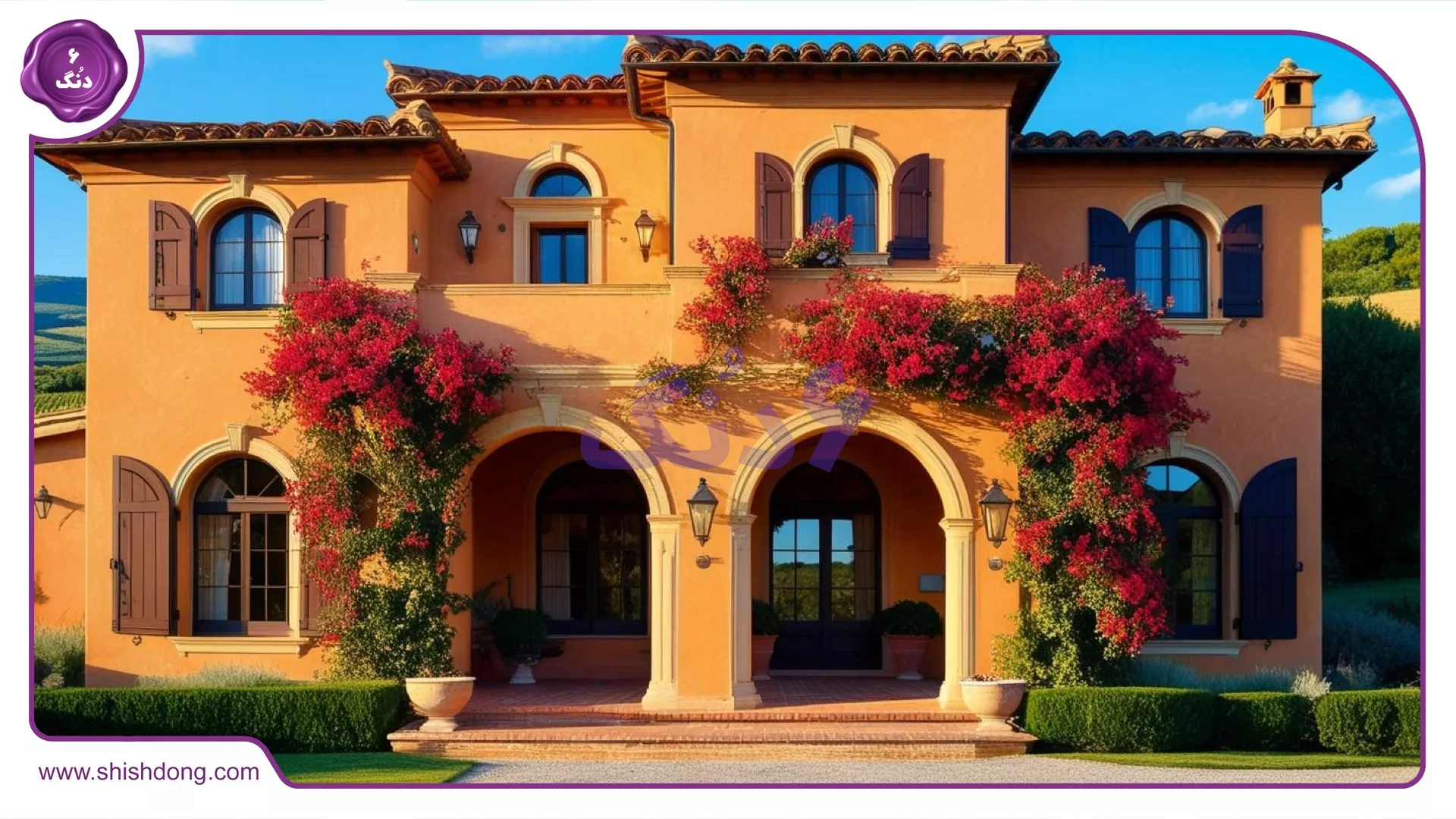
Comparison with Other Styles
| Architectural Style | Key Features | Main Material | Primary Region | Difference from Mediterranean |
|---|---|---|---|---|
| Mediterranean | Plaster walls, clay roofs, central courtyard | Stone, clay, wood | Mediterranean coasts | - |
| Gothic | Pointed arches, large stained-glass windows | Stone, stained glass | Northern Europe | More complexity, focus on height and ornamentation |
| Modern | Simple lines, glass and metal, open floor plans | Concrete, glass, steel | Worldwide | Minimalism and use of industrial materials |
| Eastern Traditional | Curved roofs, woodworking, large courtyards | Wood, tiles, adobe | East Asia | Curved forms and more intricate decorations |
| Victorian | Heavy ornamentation, large windows, turrets | Brick, wood, iron | Britain and America | Busier and more detailed |
This table can help you clearly show the differences. For example, Mediterranean prioritizes simplicity and harmony with nature, while Gothic styles focus on grandeur and more ornamentation.
Dubai House and Apartment Listings
Materials Used in Mediterranean Architecture
Mediterranean Architecture uses materials that are both durable and help keep spaces cool due to its adaptation to the warm, dry climate of the region. These materials are typically natural and locally sourced:
Natural Stone : Like limestone or sandstone, used for walls and flooring. These stones are durable and don’t absorb heat.
Clay : Used to make red or orange roof tiles, a hallmark of this style. Clay is a great thermal insulator and adds visual beauty.
Plaster : Walls are coated with white plaster or light colors to reflect sunlight and keep the house cool.
Wood : Mostly used for doors, windows, shutters, and sometimes columns. Typically, durable woods like cedar or oak are chosen.
Adobe or Brick : In areas like North Africa, raw adobe is used for thick walls that provide good insulation against heat and cold.
Mosaic and Decorative Tiles : For courtyard floors or interior walls, especially in styles influenced by Islamic architecture.
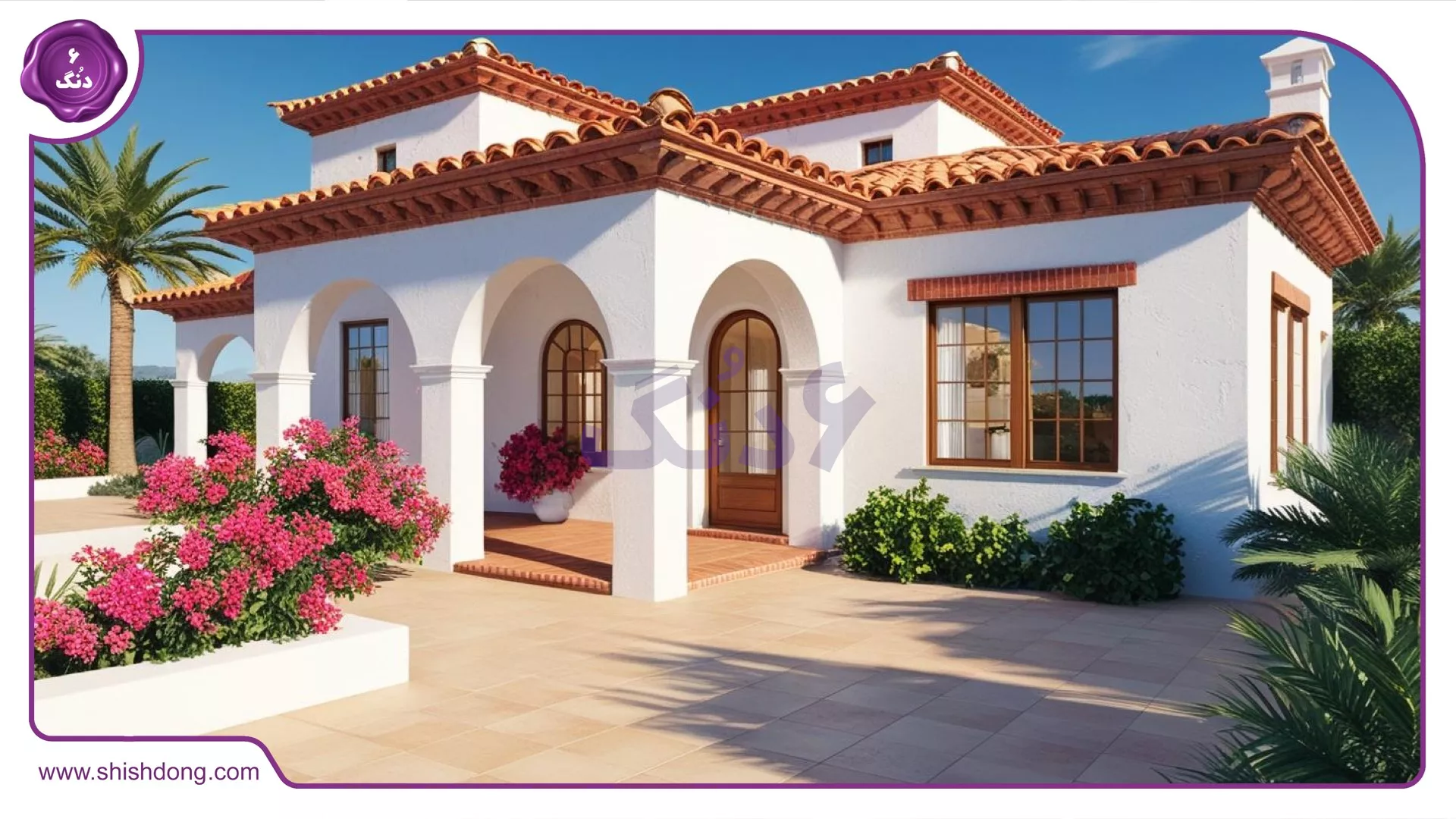
These materials are chosen for their durability in Mediterranean regions and are still used today for renovations or new constructions.
Who Can Build in This Style?
Building in the Mediterranean style doesn’t require specific expertise, but certain skills and knowledge are necessary:
-
Architects and Designers : Those familiar with traditional and modern design principles who can implement key features like central courtyards, simple symmetry, and natural ventilation.
-
Masons and Construction Workers : Individuals experienced in working with traditional materials like stone, clay, and plaster. This style requires attention to detail, such as installing roof tiles or building thick walls.
-
Renovation Enthusiasts : Many old Mediterranean homes are restored by modern owners. If someone has artistic taste and basic knowledge, they can implement this style with consultant help.
-
Local Construction Companies : In regions where this style is common, there are companies specialized in building Mediterranean homes using local materials and techniques.
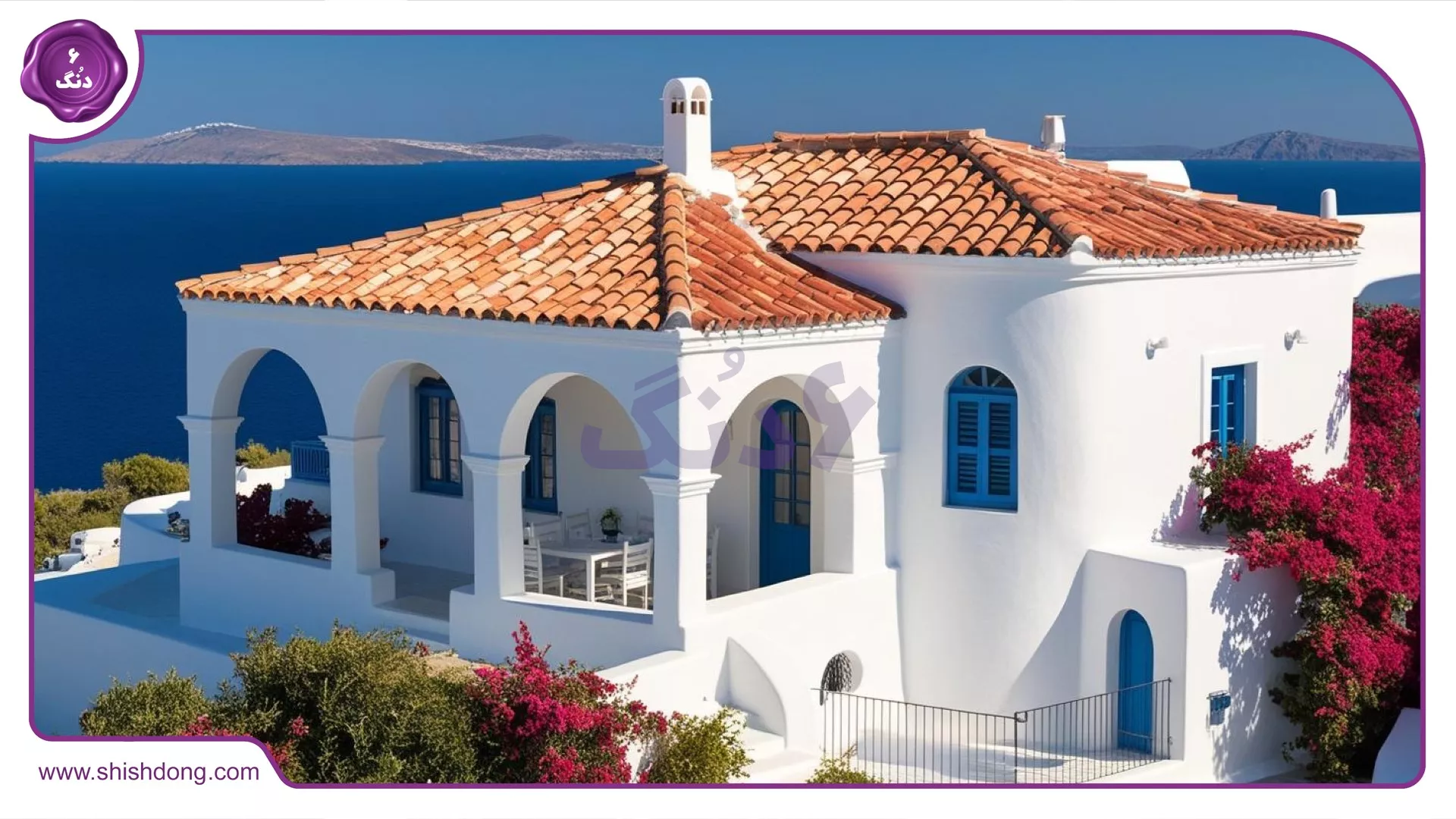
To build in this style, it’s important for the designer or builder to have a good understanding of the region’s culture and environmental needs to preserve the authentic Mediterranean feel.
Where in the World Is This Style Most Used?
Mediterranean architecture originally thrived along the Mediterranean Sea, but over time it has gained popularity in other parts of the world. Let’s see where it’s most common:
Main Regions (Origin) :
-
Spain : Especially in the south like Andalusia, with white houses and clay roofs.
-
Italy : Coastal areas like Tuscany and Sicily, with rustic villas.
-
Greece : Aegean islands like Santorini
Buying Houses and Apartments in Turkey
-
-
Comparison Table of Construction Costs (Per Square Meter)
Architectural Style Main Material Approximate Cost (Million IRR) Construction Time (Months) Maintenance Costs (Annual) Mediterranean Stone, clay, plaster, wood 12-15 8-10 Low (1-2 million) Modern Concrete, glass, steel 15-20 6-8 Medium (2-3 million) Classic (Roman) Marble, brick, intricate decorations 20-30 12-15 High (3-5 million) Eastern Traditional Adobe, wood, decorative tiles 10-13 10-12 Medium (2-4 million) -
Table Notes:
-
Construction Costs : Costs are approximate and depend on factors like material quality, labor wages, and design complexity. The Mediterranean style, due to its use of local materials, is usually cheaper than modern and classic styles but may be slightly more expensive than traditional Eastern styles.
-
Construction Time : Modern style is faster due to prefabricated materials. Classic takes longer due to intricate details. Mediterranean offers a balance of speed and quality.
-
Maintenance Costs : The Mediterranean style, with durable materials and climate-appropriate design, requires less maintenance.
-
Frequently Asked Questions -
❓ Is the Mediterranean Style Only Suitable for Hot and Dry Climates?
Not necessarily. This style is optimized for hot, dry climates like Mediterranean regions, but with some adjustments, it can work in temperate areas too. For example, in colder regions, you can reinforce wall insulation or use double-glazed windows. In very humid areas, challenges like clay and plaster moisture damage might arise, requiring waterproof materials.
❓ How Much Do Clay Roofs Cost, and Is There a Cheaper Alternative?
Clay roofs are a key feature of this style due to their beauty and durability, but their cost per square meter in Iran can range from 200,000 to 500,000 IRR (depending on clay quality). For a cheaper option, you can use metal sheets with a clay-like coating, which are lighter and faster to install, though they don’t fully convey the authentic Mediterranean feel.
❓ How Can a Central Courtyard Be Implemented in Small Plots?
The central courtyard is the heart of Mediterranean style, but in small plots, you can reduce its size or replace it with a patio with a skylight. This maintains natural ventilation and open space without occupying the entire plot.
❓ Do Plaster Walls Hold Up in Rainy Areas?
Traditional plaster walls are sensitive to water and may crack or get damaged in rainy regions. To address this, architects use waterproof plaster or protective coatings (like acrylic paint). Another option is combining plaster with brick or stone, which is more durable while maintaining the Mediterranean look.
❓ Does This Style Feel Outdated for Modern Homes?
No, with slight updates, the Mediterranean style can feel chic and modern. For instance, you can use simpler lines, larger windows (with modern shutters), or minimalist interiors. This blend keeps its classic charm while aligning with contemporary tastes.
❓ How Long Does It Take to Build in This Style?
It depends on the project size, but for an average house (150-200 square meters), it takes 8 to 12 months. This duration is largely due to manual work on materials like clay and stone. Using prefabricated materials can reduce it to 6-8 months, though it might slightly alter the quality and authenticity.
❓ How Can This Style Be Implemented in Apartments?
You can’t build a central courtyard in apartments, but you can use Mediterranean elements like white plaster colors, clay tiles on balconies, or shuttered windows. You can also decorate a small terrace with clay pots and Mediterranean plants (like olive or lavender).
Table Notes:
-
Construction Costs : Costs are approximate and depend on factors like material quality, labor wages, and design complexity. The Mediterranean style, due to its use of local materials, is usually cheaper than modern and classic styles but may be slightly more expensive than traditional Eastern styles.
-
Construction Time : Modern style is faster due to prefabricated materials. Classic takes longer due to intricate details. Mediterranean offers a balance of speed and quality.
-
Maintenance Costs : The Mediterranean style, with durable materials and climate-appropriate design, requires less maintenance.
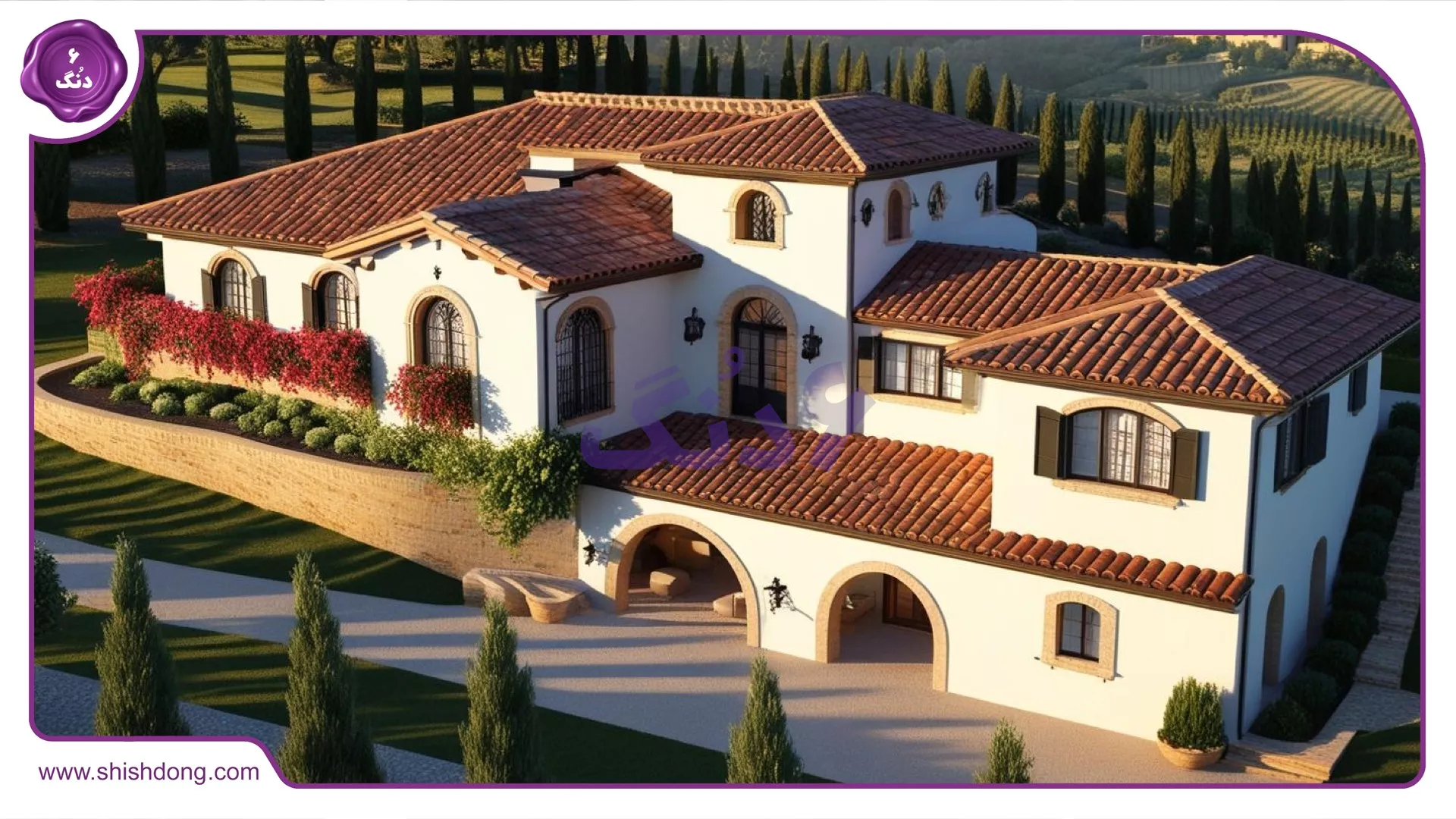
-
-
Advantages of Mediterranean-Style Houses Compared to Other Styles
Adaptability to Environment and Climate :
-
Thick plaster walls, clay roofs, and central courtyards in the Mediterranean style are perfect for hot, dry climates. They repel heat and keep the house cool, unlike modern styles that sometimes absorb too much heat due to excessive glass.
Lower Long-Term Costs :
-
Natural materials like stone and clay are highly durable and require less maintenance compared to concrete and steel (modern) or luxurious stones and intricate decorations (classic).
Aesthetic Beauty :
-
Unlike classic styles with expensive details or modern styles that can be overly simplistic, Mediterranean strikes a balance between beauty and functionality. This makes it both attractive and cost-effective to build.
Use of Local Materials :
-
In many regions (like Iran or the Mediterranean), stone, clay, and plaster are readily available, eliminating the need for expensive materials like specialty glass (modern) or marble (classic). This is an advantage over Eastern traditional styles too, as their intricate tilework can be costly.
Natural Ventilation and Energy Savings :
-
The central courtyard design and small shuttered windows enhance natural airflow, reducing the need for cooling systems. This is a significant advantage over modern styles (reliant on artificial ventilation) and classic styles (more enclosed spaces).
Flexibility in Execution :
-
The Mediterranean style can be adapted to various budgets. For a luxurious look, you can use marble; for a more economical approach, adobe and plaster work well. This flexibility is less common in classic or modern styles.
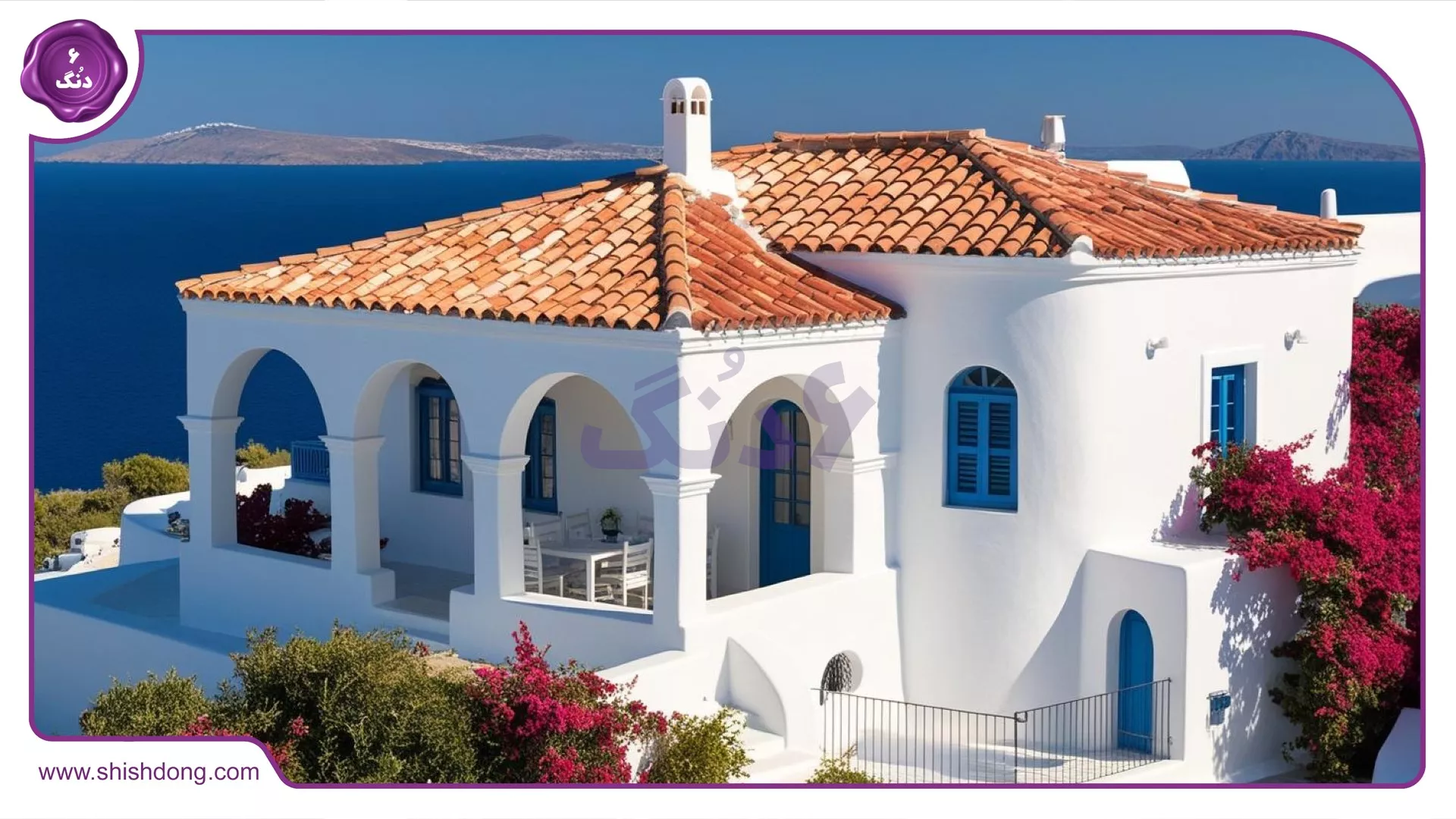
Buying Houses and Apartments in Iran
Conclusion
The Mediterranean style is a smart and cost-effective choice for construction costs—not as cheap as Eastern traditional styles nor as expensive as classic ones. Its biggest advantages are durability, harmony with nature, and reduced long-term maintenance costs, which become evident over time. If you’re planning to build in Iran or a hot, dry region, this style is both economically and practically a wise option.
| 👆Start of Article👆 | 👈Article Translation👉 |
Atefeh Moradi







![وقت طلاست [لزوم استفاده از ضرب المثل قدیمی] وقت طلاست [لزوم استفاده از ضرب المثل قدیمی]](/_next/image?url=https%3A%2F%2Fapi1.shishdong.com%2FFiles%2F2034896c628d-598f-4ec3-bb4d-6a162a4c064b%2Fb5884999-8b06-4481-b7b1-567f4ad738fd.webp&w=256&q=75)


















